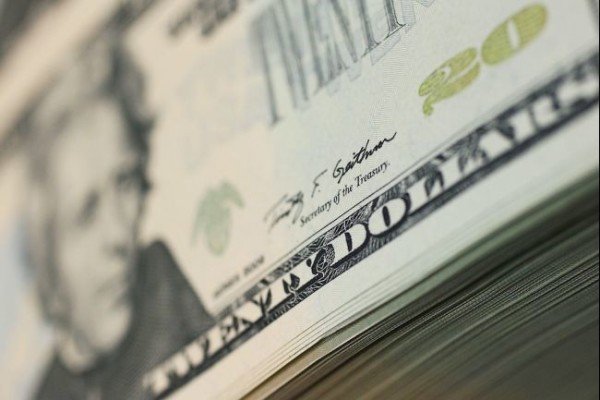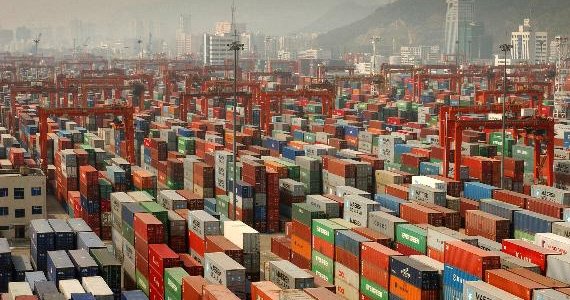Home Tags Posts tagged with "gross domestic product"
gross domestic product
US economic growth slowed sharply in Q3 of 2015.
According to the Department of Commerce, the US gross domestic product (GDP) grew at an annualized pace of 1.5% in Q3 of 2015, down from a rate of 3.9% in Q2.
The slowdown was partly due to companies running down stockpiles of goods in their warehouses.
On October 28, the Federal Reserve kept rates unchanged and said the economy was expanding at a “moderate” pace.
Low oil prices have hit American energy companies so far this year.
However, lower fuel prices have been good news for consumer spending, which accounts for more than two-thirds of US economic activity.
Consumer spending grew at 3.2% in Q3, down from 3.6% in the second but still a strong reading.
Analysts said that the running down of warehouse stockpiles in Q3 was likely to be a temporary effect and they expected growth to accelerate again in Q4.
For several months there has been intense debate about when the Fed will raise interest rates, and now the focus is on its last meeting of the year in December.
The Fed has said in past statements that it expects to raise rates in 2015, and that labor market participation, inflation and the global economy would be the key factors in its decision.
In its latest statement on October 28, the Fed said: “In determining whether it will be appropriate to raise the target range at its next meeting, the committee will assess progress – both realized and expected – toward its objectives of maximum employment and 2% inflation.”
However, the Fed dropped comments, which had been used in the previous month’s statement, that weaknesses in the global economy could affect the US.
Financial markets interpreted this as a sign that the Fed might be more likely to raise rates in December.
China’s economic growth slowed in Q2 2013, the second straight quarter of weaker expansion.
The world’s second biggest economy grew by 7.5% in the April to June period compared to the previous year, down from 7.7% in the January to March period, data showed.
The figures were in line with analyst expectations.
After decades of blistering growth in China, analysts say authorities now seem ready to accept a slower pace of expansion.
The figures showed that weak trade data and actions by authorities to reign in bank lending contributed to the slower growth.
“As of now, China’s gross domestic product has been staying under 8% for five straight quarters, a clear sign of distress,” said economist Ren Xianfang from IHS Global Insight.
“The rather sharp growth deceleration and the recent financial market turmoil indicate that risks have been building on both the financial and real goods sector,” she added.
The government has set a target of 7.5% growth for the whole of 2013, which would mark the lowest rate of expansion in more than two decades.

China’s economic growth slowed in Q2 2013, the second straight quarter of weaker expansion
China has been a major driver of the global economy and many countries have gained because of the demand from Chinese companies, including the mining sector in Australia.
However, analysts questioned whether the 7.5% target would be achieved without some stimulus measures from the government.
“We will see some targeted measures to stimulate growth,” said Credit Agricole CIB economist Dariusz Kowalczyk.
“They have to do something. Otherwise they will miss their target. And they cannot afford that, because this is their first year in power.”
A spokesperson for the National Bureau of Statistics said: “Major indicators are within our targeted range but we face a complex situation.”
China’s leaders have repeatedly said that the long-term goal is to rebalance the economy away from an over-reliance on exports and investment, and spur consumer spending instead.
“Some measures, including the intensified property tightening campaign, new rules to curb misuse of public funds and the exit some previous stimulus policies, will inevitably have some impact on growth in the short term, but they will benefit our economy in the long run,” said Sheng Laiyun from the bureau of statistics at a press conference.
In 2012 China expanded at a rate of 7.8%, its worst annual performance in 13 years.
[youtube 8OfXfl3Evek]
The US unemployment rate fell in September to its lowest rate since January 2009, figures from the Department of Labor have shown, surprising analysts who had been expecting a small rise.
September’s rate came in at 7.8%, down from 8.1% in August.
The latest data also showed that the US economy added a further 114,000 jobs in September, slightly more than markets had expected.
The US jobs market is a key issue in the presidential election race.
When the unemployment rate was last this low, President Barack Obama was about to take office.
However, economist Sean Incremona of New York-based company 4Cast said the latest data showed that the US economy remained subdued.
“Generally, we are still seeing a mixed underlying picture that is neither too impressive nor terrible,” he said.
Fellow economist, Omer Esiner, of Rhode Island-based Commonwealth Foreign Exchange, was more upbeat.
“The headline of the day is clearly the drop in the unemployment rate, which was a big surprise,” he said.
“There is something in these numbers for everyone. The rise in the participation rate shows somewhat of a real improvement in the labour market.”
The latest official data showed that the construction sector added 5,000 jobs last month, while the number of people working in government jobs rose by 10,000.
However, the biggest gain was record in the healthcare sector, which added 44,000 jobs in September.
The Labor Department also used the release of the September data to revise up how many new jobs were created in both July and August. It said that 86,000 more jobs than first calculated were added across the two months.
Separate official figures released at the end of last month revised down by how much the US economy had grown between April and June.
Gross domestic product (GDP) in the second quarter grew at an annualized rate of 1.3%, down from the previous estimate of 1.7%.
China’s economy has grown at its slowest pace in three years as investment slowed and demand fell in key markets such as the US and Europe.
Gross domestic product rose by 7.6% in the second quarter, compared with the same period a year ago. That is down from 8.1% in the previous three months.
In March, Beijing cut its growth target for the whole of 2012 to 7.5%.
China accounts for about a fifth of the world’s total economic output and any slowdown may hamper a global recovery.
At the same time, many of Asia’s biggest and emerging economies are becoming increasingly reliant on China as a trading partner.
“China has been a big factor for the slowdown in Asia this year,” said Tai Hui from Standard Chartered Bank in Singapore.
He added that if China’s growth does not pick up in the second half of the year then “that’s going to mean a very difficult second half for a lot of the manufacturers in this region”.

China's economy has grown at its slowest pace in three years as investment slowed and demand fell in key markets such as the US and Europe
However, despite Friday’s slower growth figures many analysts tried to allay fears of a so-called hard landing in China’s economy and its subsequent impact on the rest of the world.
“If you get a drop in the growth rate of 1 percentage point per annum, that’s not a lot in terms of the world gross domestic product,” said Edmund Phelps, a professor of political economy at Columbia University and a Nobel prize winner.
He added that China had a lot of ammunition to counter the slowdown, some of which it has already started using because of the patchy recovery in the US, and the ongoing debt and economic issues in the eurozone.
China’s central bank has cut the amount of money banks must keep in reserve in order to boost lending, and it recently cut the cost of borrowing twice in one month.
Earlier this week, Premier Wen Jiabao said that boosting investment would also be crucial for stabilizing growth, fuelling expectation that more state-driven stimulus measures would be on the way.
“Now that China’s growth is slowing, there are calls for yet another stimulus,” said Edward Chancellor, global Strategist at investment management firm GMO.
But analysts warned that China’s growth problems may not be solved by a simple injection of capital and a new round of government spending. Especially as many of today’s issues can be traced back to the way the country tried to kick start growth after the global financial crisis in 2008-2009.
At the time the central government began pumping huge amounts of money into the economy, mainly on infrastructure and construction spending.
This led to excess capacity, a surge in property prices and an increase in consumer costs and inflation.
Faced with these problems and amid fears that the economy may be overheating, policy makers decided to implement measures to curb lending and slow inflation.
Those steps, along with a drop in demand for Chinese goods from key markets such as Europe and the US, have caused the most recent cycle of slowing growth.
In 2011, China’s economy grew by 9.2%, down from 2010’s figure of 10.4% growth.
But while the longer-term trend is of a slowdown, China also released a number of other figures on Friday and they painted a more nuanced and mixed picture of the economy.
According to the official figures, retail sales increased by 13.7% in June, little changed from May’s 13.8% figure.
At the same time, electricity output, an indicator that many analysts use to calculate current business and consumer activity, was also flat in June at 393 billion kilowatt-hours.
Optimists, however, would have been buoyed by news that new bank loans increased to $144.4 billion in June, up from $124.4 billion in May.
The data will do nothing to stop the economic squabbling over whether China is heading for a hard or soft landing.



